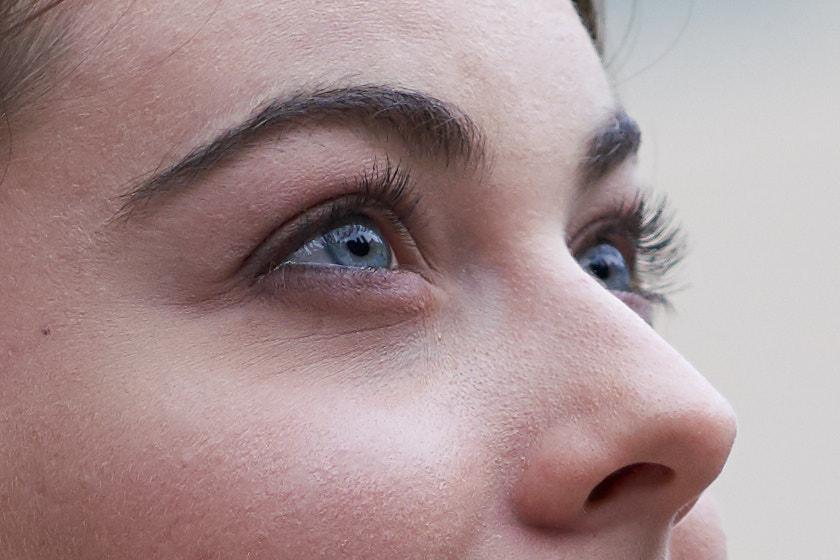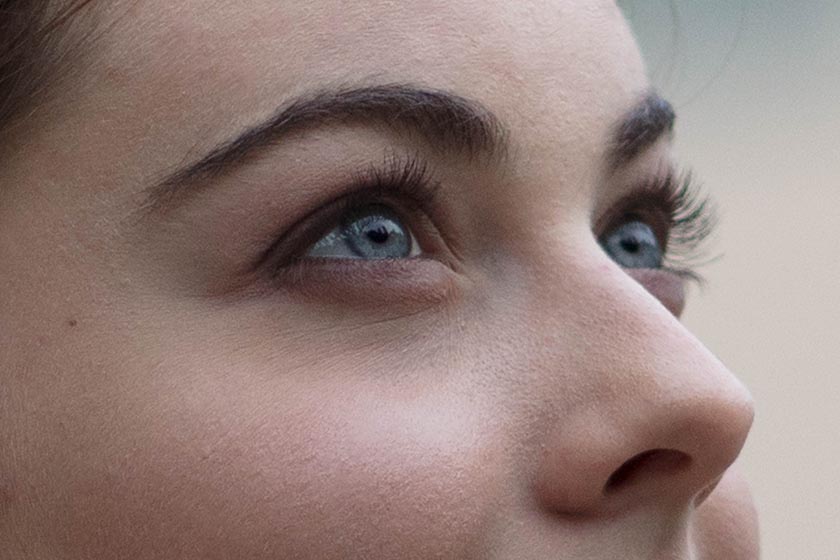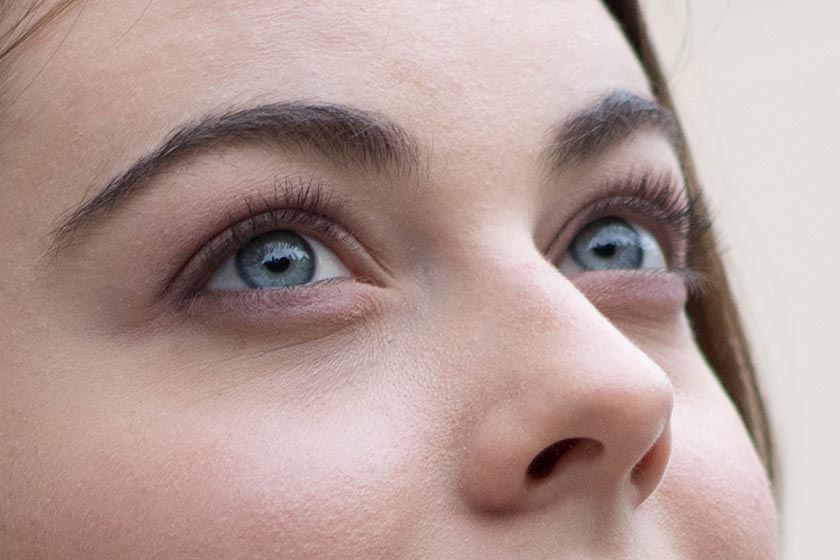Sony A7R Mark III vs the Nikon D850 and Canon 5DSR - Rationalizing High Resolution
I was obviously miffed the Sony FE 35mm f/1.4 ZA was not the most appropriate lens to fully demonstrate the Sony A7R Mark III, on my last post. So much was my disappointment, that it drove me over the edge. How was it possible that native Zeiss lenses made for full frame Sony mirrorless cameras were not optimized for higher resolution sensors? It was truly unthinkable! I just assumed they were. But apparently, they're not. And because of that, I can no longer look at my Sony Zeiss lenses without regret.
This is not to say Sony Zeiss lenses are bad. To be perfectly frank, their ability to resolve detail on the Sony A9 is absolutely lovely - just as on the Sony A7 variant and the Sony A7S variant. However, if one were to have a high resolution camera, like the Sony A7R variant, wouldn't it make sense to also have a lens that can fully resolve detail on that sensor? I mean, if you have a 42 megapixels camera, why get a lens than is only optimized to 24 megapixels? It would seem like such a waste.
Mind you, it's not as if Sony has a large selection of lenses that can resolve detail at high resolution. In total, I'm guessing they have six - all of them being G Master lenses. Call it a hunch. And of those six lenses, only one of them is at a focal length and maximum aperture I might occasionally use. That distinction goes to the Sony FE 85mm f/1.4 GM - not exactly my first choice for building a system. So, you could understand my oversight in passing over this G Master lens in favor of Zeiss made Sony primes that covered the 35mm and 50mm focal length.
Sony A7R Mark III + Sony FE 85mm f/1.4 GM - ISO 100, f/2, 1/1000s
Sony A7R Mark III + Sony FE 85mm f/1.4 GM - ISO 12,800, f/8, 1/100s
Roughly 100% Magnification - clearly Sony's G Master lenses resolves more details at high resolution than the native lenses from Zeiss. Notice how the edge of Anna's eye lashes are not feathered or pixelated, even at ISO 12,800. This demonstrates how fine noise appears on the Sony A7R Mark III.
Sony A7R Mark III + Sony FE 85mm f/1.4 GM - ISO 400, f/2.8, 1/25s
Sony A7R Mark III + Sony FE 85mm f/1.4 GM - - ISO 400, f/2.8, 1/25s
Sony A7R Mark III + Sony FE 85mm f/1.4 GM - ISO 400, f/1.4, 1/60s
Sony A7R Mark III + Sony FE 85mm f/1.4 GM - ISO 1600, f/1.4, 1/500s
My oversight became even more apparent, the moment I started to review my image capture on the rear LCD screen. Clearly the 85mm f/1.4 G Master was designed to resolve details at higher resolution. When the image capture is in tack focus, there is a distinct absence of feathered pixelation along the edge of shapes at high magnification. Personally, it was immensely satisfying to observe this, since it meant I was using the right lens on the high resolution sensor.
Still, it's not as if Sony has done anything groundbreaking. Nikon has the D850 while Canon has the 5DSR. Both are high resolution full frame cameras and both have accompanying lenses which are optimized to resolve more detail on them. Having said that, I find Sony better suited to optimize high resolution image capture, compared to either the Nikon or Canon. Admittedly, I may just be biased at the moment, given the novelty of handling a new camera. However, it's difficult to dispute this assertion, seeing how phenomenally capable the Sony A7R Mark III is, strictly as a tool in capturing detail at high resolution when paired with a G Master lens.
Whether this assertion is true or not is currently anybody's guess. In my opinion, the best way to put this matter to rest is to conduct a "proper" comparison. So for today's blogpost, I will be comparing the following cameras systems.
Sony A7R Mark III + Sony FE 85mm f/1.4 GM
Canon 5DRS + Canon EF 85mm f/1.4L IS USM
Nikon D850 + Nikon AF-S 105mm f/1.4E
All three lenses selected in this comparison are designed to resolve greater detail at high resolution. The Canon EF 85mm f/1.4L IS USM was selected to match the focal length of the Sony FE 85mm f/1.4 GM. Also worth noting, the Nikon AF-S 85mm f/1.4G wasn't selected, because it wasn't designed to resolve details at high resolution. This may seem to throw a curve into the mix, since it's no longer leveled comparison anymore. But, it should also be noted that the sensor size of all three cameras are not the same. As such, there was never going to be a strictly same sized apples to apples comparison between the three cameras and lens combination.
Sony A7R Mark III + Sony FE 85mm f/1.4 GM - ISO 400, f/4, 1/400s
Canon 5DSR + Canon EF 85mm f/1.4L IS USM - ISO 400, f/4, 1/400s
Nikon D850 + Nikon AF-S 105mm f/1.4E - ISO 400, f/4, 1/400s
Sony A7R Mark III + Sony FE 85mm f/1.4 GM - ISO 400, f/4, 1/250s
Canon 5DSR + Canon EF 85mm f/1.4L IS USM - ISO 400, f/4, 1/250s
Nikon D850 + Nikon AF-S 105mm f/1.4E - ISO 400, f/4, 1/250s
Roughly 200% magnification - Top to bottom - Sony, Canon, Nikon. All three system appear more or less similarly capable at resolving details at high resolution.
In general, it may appear to be somewhat inconsequential to conduct such a decadent comparison. I mean, what possible benefit could there ever be in determining which camera system is best optimized for successful image capture at high resolution. Well, there are those who seek high resolution documentation for practical everyday use. Because of that, it might be useful to know which camera system offers the best tool for successful image capture at high resolution.
What many may not immediately appreciate is how high resolution photography has evolved since the introduction of the first full frame high resolution camera, the Nikon D800. At the time, the D800 was mostly considered a niche product, since its 36 megapixel sensor made it somewhat of a prima donna to use. It wasn't one of those cameras one could just toss around during the decisive moment, given a higher probability of camera shake perceptible at high resolution. It had to be respected with proper shooting fundamentals, practiced at lower shutter speeds, in order to avoid blurred image captures.
But with the introduction of newer technologies that dealt with mechanical vibrations better, practical use of high resolution cameras have become more conventional. Still, it may not seem necessary for most photographic enthusiasts or even professionals to regularly shoot at such high resolution. However, high resolution photography does offer the additional benefit of increased details - whether downsampled to increase perceived sharpness or upscaled with the image integrity perceptibly preserved.
Because of that, high resolution cameras can now essentially be regarded more commonly as an everyday tool as oppose to a niche product. However, what remains to be seen is which camera system is best optimized for successful image capture at high resolution. To make that determination, I have isolated the following two criteria, which I believe to be most relevant to successful image capture at high resolution.
The User Experience
The Image Reproduction
From my perspective, I fundamentally believe it's the way a camera functions in use and the way a camera reproduces an image that determines its capability.
Sony A7R Mark III + Sony FE 85mm f/1.4 GM - ISO 1600, f/1.4, 1/800s
Canon 5DSR + Canon EF 85mm f/1.4L IS USM - ISO 1600, f/1.4, 1/800s
Nikon D850 + Nikon AF-S 105mm f/1.4E - ISO 1600, f/1.4, 1/800s
Sony A7R Mark III + Sony FE 85mm f/1.4 GM - ISO 1600, f/1.4, 1/640s
Canon 5DSR + Canon EF 85mm f/1.4L IS USM - ISO 1600, f/1.4, 1/640s
Nikon D850 + Nikon AF-S 105mm f/1.4E - ISO 1600, f/1.4, 1/640s
Roughly 200% magnification - from left to right - Sony, Canon, Nikon. Notice the difference in rendering.
Evaluation of User Experience
With regards to user experience, the two main issues most relevant to high resolution photography are the following.
Camera Shake
Continuous shooting
As explained already, camera shake is an issue with high resolution photography, given the sensor's ability to capture normally imperceptible motion, inside or in support of the camera, at lower shutter speeds. Continuous shooting is an issue when mirror lock up is activated, for the sake of eliminating camera shake from the mirror slap, since it causes a delay in advancing the frame.
At 50 megapixels, the Canon 5DRS should have been most prone to camera shake, given its comparatively larger sensor size. However, camera shake did not appear particularly difficult to control, given its one button mirror lock up function and in-lens image stabilization. This greatly reduced vibration in the image capture. However, the mirror lock up function, albeit set at a 1/8s delay after shutter actualization, noticeably made the experience of shooting continuously somewhat jerky.
By comparison, the Nikon was somewhat more temperamental. It's possible that the difference in focal length or the increased weight of the lens could have negatively impacted user experience. However, what is clear is that the Nikon D850, and the Nikon AF-S 105mm f/1.4E does not have image stabilization in-body and in-lens. Furthermore, it also doesn't have a one button mirror lock up function to reduce camera vibration. What the Nikon D850 offers instead is a mirror lockup mode (Mup) which requires two shutter press. In practical use, two button press is more demanding than one button, since it requires one additional step of involvement from the photographer. But more notably, the need to press the shutter twice per frame significantly impedes continuous shooting.
As for the Sony A7R Mark III, it's a mirrorless camera with 5-axis in-body stabilization. Plus it also has the smallest sensor, at 42 megapixels, which makes image capture marginally less prone to camera shake. Because of that, the Sony A7R Mark III is significantly easier to stabilize in documentation than on the other two cameras. Moreover, the Sony A7R Mark III doesn't have a mirror. This means it doesn't have any mirror lockup issue to impede continuous shooting.
Of the three cameras, the Sony A7R Mark III clearly has the most optimized user experience for high resolution photography.
Sony A7R Mark III + Sony FE 85mm f/1.4 GM - ISO 6400, f/2.8, 1/200s
Canon 5DSR + Canon EF 85mm f/1.4L IS USM - ISO 6400, f/2.8, 1/200s
Nikon D850 + Nikon AF-S 105mm f/1.4E - ISO 6400, f/2.8, 1/750s, +1 stop in Lightroom
Sony A7R Mark III + Sony FE 85mm f/1.4 GM - ISO 400, f/2, 1/320s
Canon 5DSR + Canon EF 85mm f/1.4L IS USM - ISO 400, f/2, 1/500s, +1 stop in Lightroom. The camera kept on compensating -3/4 stop, while set on Aperture Priority Mode, even though the exposure compensation wasn't in use.
Nikon D850 + Nikon AF-S 105mm f/1.4E - ISO 400, f/2, 1/320s



Evaluation of Image Reproduction
With regards to image reproduction, the two main issues most relevant to high resolution photography are the following.
Clearness of image files
Approach to rendering detail
Clearness of image files is an issue with image reproduction, since the size of pixelated noise can greatly impact the integrity of finely resolved details at high resolution. Approach to rendering details can be an issue with image reproduction, since differences in applying contrast, clarity, or even saturation can greatly impact the perceived sharpness of an image.
At 50 megapixels, one would assume that the Canon 5DSR would offer the best image reproduction for high resolution photography. However under high magnification, what becomes immediately apparent is how noticeable noise is, even at marginally higher ISO. Admittedly, the Canon 5DSR was not made to optimize image reproduction in lower light conditions. But this makes it less practical for daily use. Furthermore, the Canon 5DSR appears to take a more realistic approach to rendering. In my opinion, the images from the Canon seem sterile, having less contrast, saturation, and clarity, even when evaluated at high magnification. Invariably, this makes its image reproduction appear comparative less sharp than the Sony and Nikon, at high resolution. Having said that, the Canon 5DSR is in the middle of its model cycle, and is probably in need of a refresh.
By comparison, the Nikon D850 appear to have much cleaner image files, even when ISO is marginally higher (which I suspect wouldn't impact image reproduction at and under ISO 6400). This makes the Nikon D850 very usable for most daily use. Furthermore, the Nikon D850 appears to take a more subtle approach to rendering the image with a degree of visual appeal. In my opinion, the images from the Nikon have a touch of contrast, saturation, and clarity to give it a slight boost in perceived sharpness. Overall, I find the image reproduction of the Nikon D850 at high resolution to be a good balance between resolving details and rendering for visual appeal. Having said that, optimizing image reproduction at high resolution clearly isn't the main focus of the Nikon D850.
As for the Sony A7R Mark III, it can best be described as a purpose built tool for high resolution photography. Compared to the Nikon D850, the Sony A7R Mark III has similarly clean image files at normal ISO. However, the Sony also has somewhat more reach with cleaner usable files at higher ISO. But more telling is the extreme approach Sony takes to optimally render high resolution images. In my opinion, Sony greatly increases contrast, clarity, and even saturation, in order to give its images a noticeable boost in perceived sharpness. This makes sense from a technical perspective, since the defining difference between the Sony A7R Mark III from its predecessor is essentially the algorithm it uses to render images on the same sensor.
Objectively speaking, the Sony A7 Mark III has the most optimized image reproduction for high resolution photography.
Sony A7R Mark III + Sony FE 85mm f/1.4 GM - ISO 400, f/1.4, 1/30s - Edited in Capture One
Sony A7R Mark III + Sony FE 85mm f/1.4 GM - ISO 800, f/1.4, 1/25s - Edited in Capture One
Sony A7R Mark III + Sony FE 85mm f/1.4 GM - - ISO 1600, f/1.4, 1/30s, +1 stop - Edited in Capture One
For some, it may be difficult to accept the Sony A7R Mark III is best in optimizing image reproduction at high resolution. Admittedly, under high magnification, the details can be overwhelming. However, what one needs to remember is the way images are normally viewed. Like Michelangelo's David, which wasn't made to be viewed up close, the increased clarity and contrast in image reproduction of the Sony A7R Mark III wasn't made to be seen at high magnification. However, when appreciated from a proper viewing distance, the added definition in details gives the image increased dimension, which makes it appear less flat.
In conclusion, with both user experience and image reproduction compared and evaluated objectively, I am reasonably satisfied with my assertion that the Sony A7R Mark III is currently the best daily tool for high resolution full frame photography. So, I guess it's more than just the novelty of handling a new camera. Only, just make sure you pair it with a G Master lens.
I'm still miffed with my Sony Zeiss lenses.
By the way... it would be nice if Leica would finally get around to introducing a high resolution full frame camera. From the perspective of product differentiation, wouldn't a 40+ megapixel Leica SL make sense? I'm just saying...
Images have been not been edited in Lightroom or Capture One, unless mentioned otherwise in the captions. The title image was shot with a Nikon D850, and edited in Lightroom.






